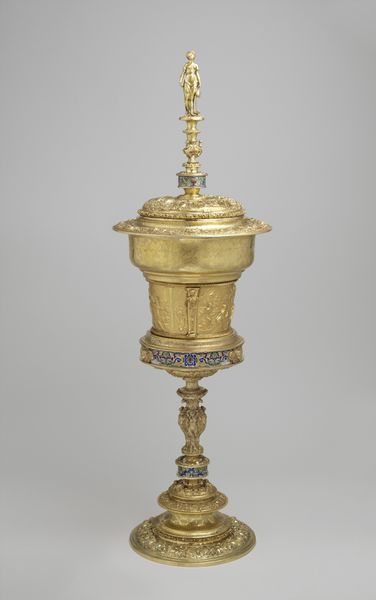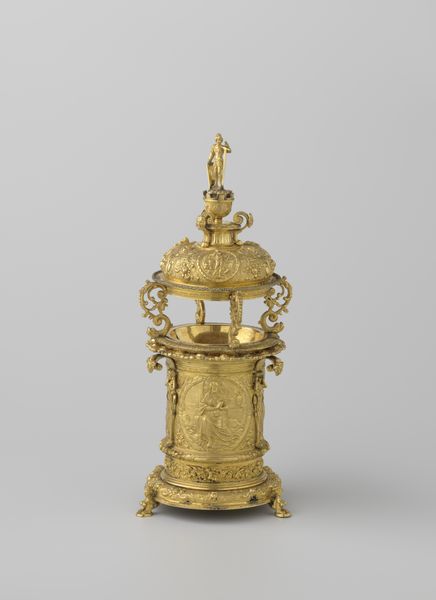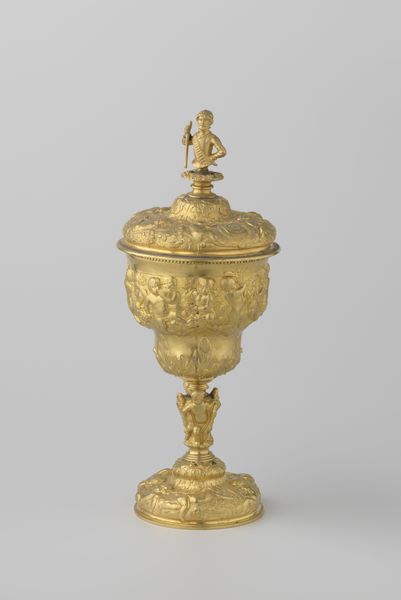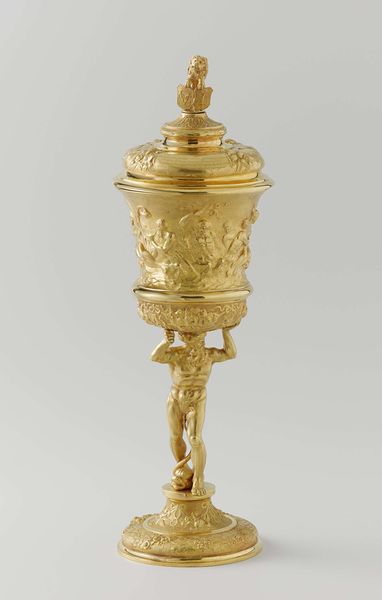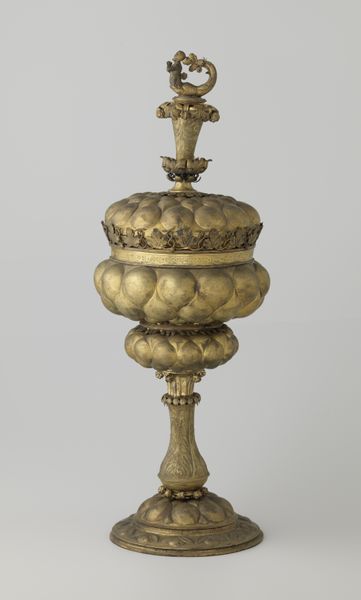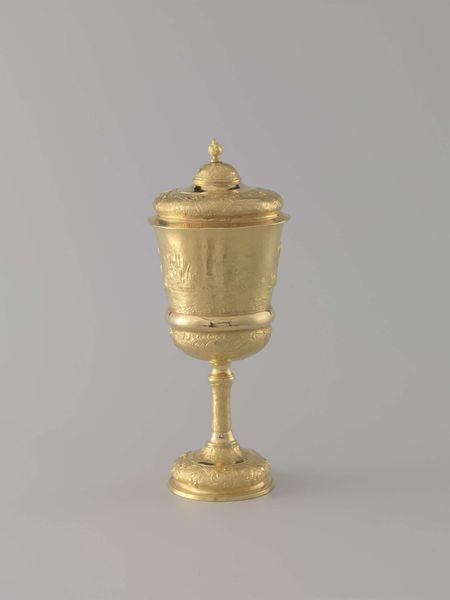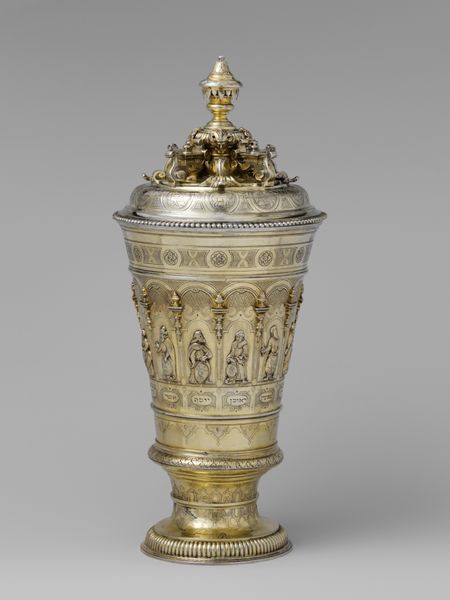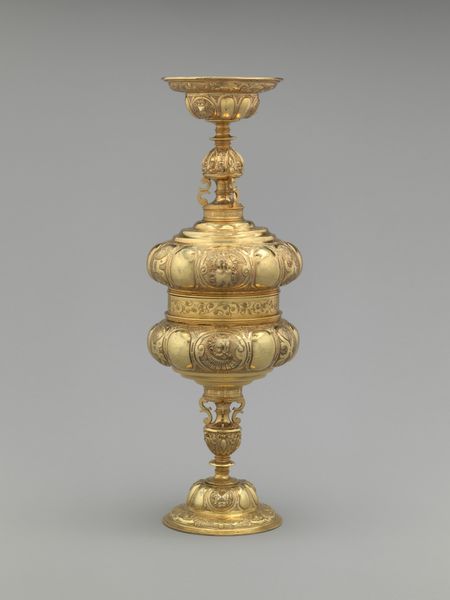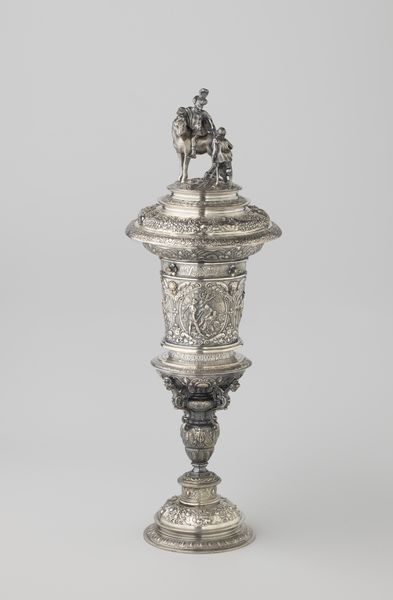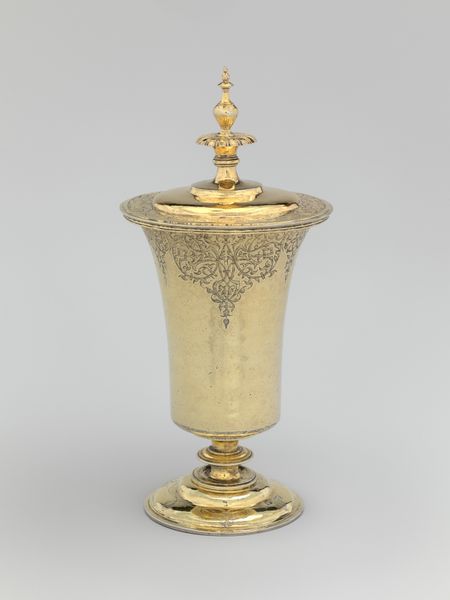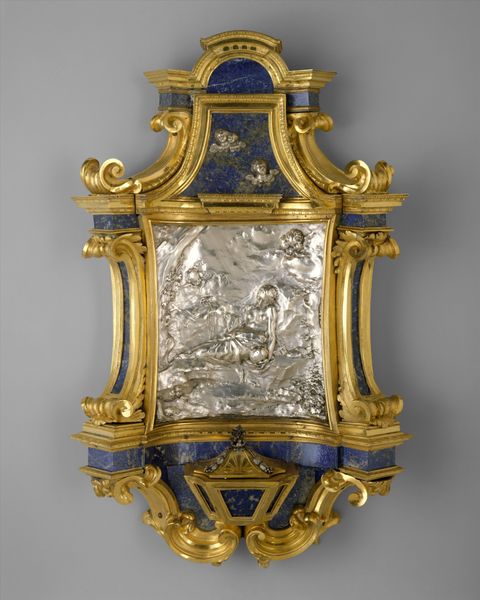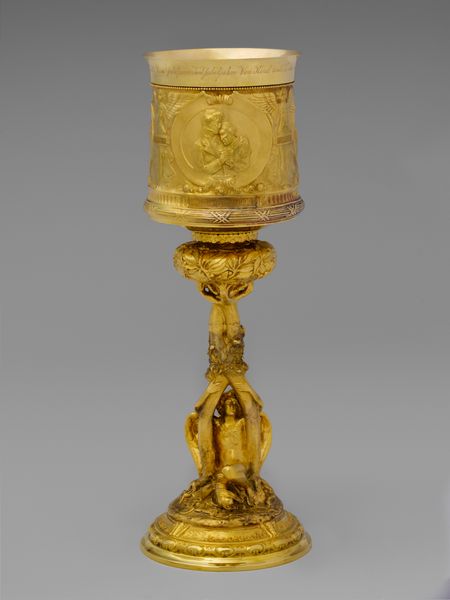
Galvanoplastische reproductie van een bokaal met deksel versierd met bandwerk, maskerons en email before 1881
0:00
0:00
brass, metal, relief, sculpture
#
byzantine-art
#
brass
#
metal
#
relief
#
geometric
#
sculpture
#
decorative-art
Dimensions: height 69.0 cm, height 40.5 cm, diameter 27.5 cm
Copyright: Rijks Museum: Open Domain
Curator: Looking at this object, I immediately see power and status. The height and gleam would certainly catch the eye. Editor: Indeed! We’re looking at a galvanoplastic reproduction of a lidded goblet, currently held in the collection of the Rijksmuseum. The original design dates back before 1881, and the replica was created by Elkington & Co. Curator: The bandwork is intense, almost overwhelming! Those maskarons stare right through you, like gargoyles protecting something precious. And is that enamel work adding touches of dark blue to accent all the brass and metal? Editor: Absolutely. Notice how geometric patterns are integrated into the overall decorative scheme. While technically a reproduction, its elaborate detailing draws heavily from the Byzantine aesthetic. There is the echo of a desire to evoke that era. Curator: I see that. There’s something intentionally anachronistic at play, almost theatrical, especially considering the method of production: galvanoplasty! It speaks volumes about aspirations of recreating bygone opulence. It gives the piece a new life, another chance to mean something across eras. Editor: I agree. And what does it mean now? For whom was this symbolic vocabulary relevant? What narrative of power, of connection to this artistic past, was being fashioned? Curator: I’d hazard a guess that this was meant for display, pure and simple. To inspire a kind of awe and maybe a little… envy. The material and artistic language might be lost on most viewers, but not the overall intention. Editor: Perhaps. I would suggest the choice to revive Byzantine forms at a time when European nations were building empires speaks to the deployment of the visual language of continuity and heritage to suggest, and perhaps to claim, a deeper cultural significance than the object itself possesses. Curator: The act of reproducing something also elevates the original and embeds it within a story much grander. Reproduction creates a new relationship between art, history, and interpretation. Editor: I would add a very pertinent connection to the contemporary socioeconomic narrative. As this reproduction testifies to a desire to participate in an imperial past, its cultural weight takes on political dimensions. Curator: Precisely, one sees, through a reproduction, an echo, a question posed to those long gone. Editor: Indeed. And with that reverberation still ringing, our time here is through.
Comments
No comments
Be the first to comment and join the conversation on the ultimate creative platform.
